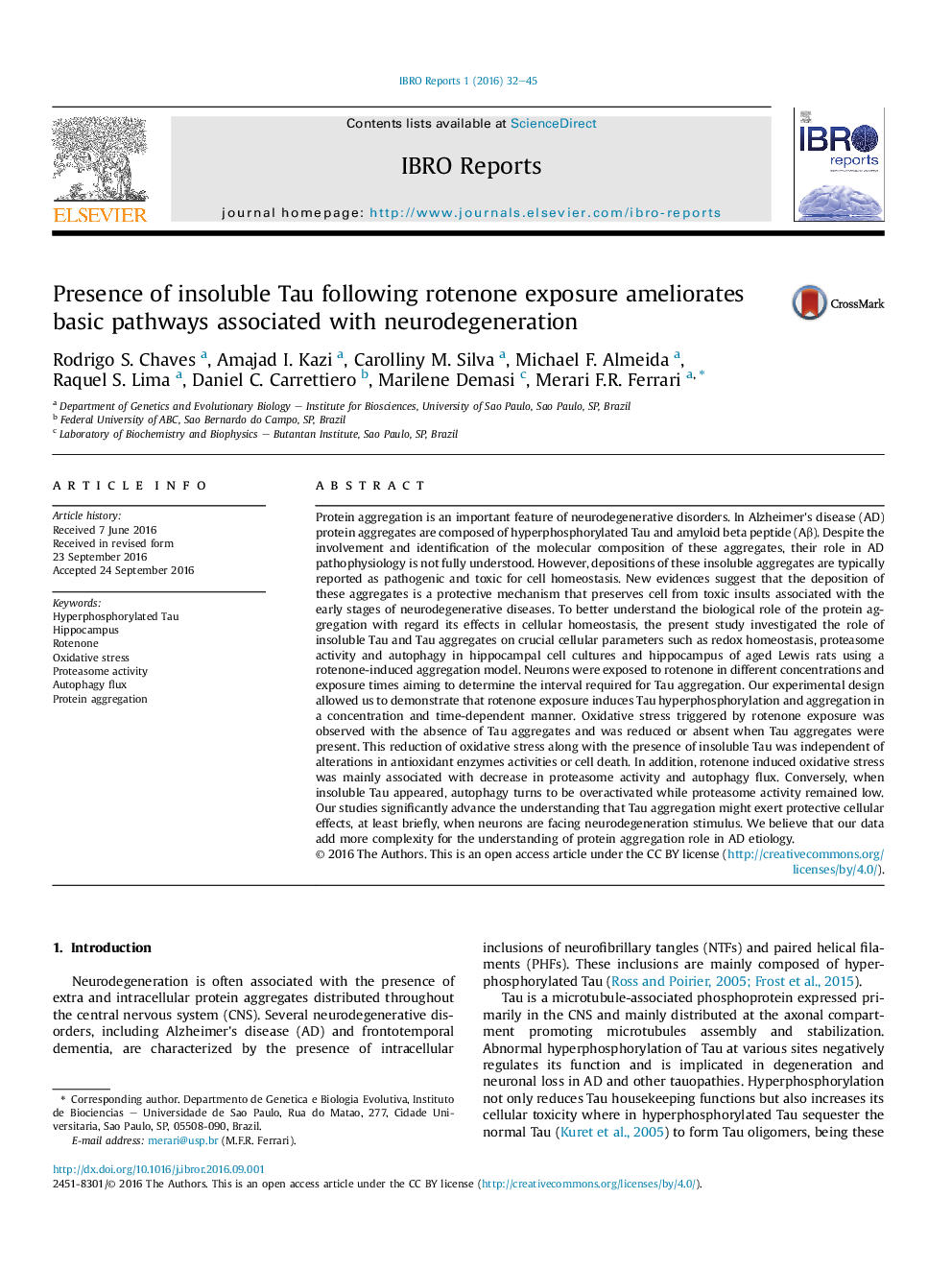| کد مقاله | کد نشریه | سال انتشار | مقاله انگلیسی | نسخه تمام متن |
|---|---|---|---|---|
| 4320460 | 1613314 | 2016 | 14 صفحه PDF | دانلود رایگان |
• Rotenone triggers Tau hyperphosphorylation and aggregation in a time and concentration-dependent manner, being the temporal component predominant.
• Autophagy is modulated differently before and during Tau aggregation, while proteasome activity is reduced in both conditions.
• The formation of Tau aggregates normalizes cellular dysfunctions detected in the absence of them.
Protein aggregation is an important feature of neurodegenerative disorders. In Alzheimer's disease (AD) protein aggregates are composed of hyperphosphorylated Tau and amyloid beta peptide (Aβ). Despite the involvement and identification of the molecular composition of these aggregates, their role in AD pathophysiology is not fully understood. However, depositions of these insoluble aggregates are typically reported as pathogenic and toxic for cell homeostasis. New evidences suggest that the deposition of these aggregates is a protective mechanism that preserves cell from toxic insults associated with the early stages of neurodegenerative diseases. To better understand the biological role of the protein aggregation with regard its effects in cellular homeostasis, the present study investigated the role of insoluble Tau and Tau aggregates on crucial cellular parameters such as redox homeostasis, proteasome activity and autophagy in hippocampal cell cultures and hippocampus of aged Lewis rats using a rotenone-induced aggregation model. Neurons were exposed to rotenone in different concentrations and exposure times aiming to determine the interval required for Tau aggregation. Our experimental design allowed us to demonstrate that rotenone exposure induces Tau hyperphosphorylation and aggregation in a concentration and time-dependent manner. Oxidative stress triggered by rotenone exposure was observed with the absence of Tau aggregates and was reduced or absent when Tau aggregates were present. This reduction of oxidative stress along with the presence of insoluble Tau was independent of alterations in antioxidant enzymes activities or cell death. In addition, rotenone induced oxidative stress was mainly associated with decrease in proteasome activity and autophagy flux. Conversely, when insoluble Tau appeared, autophagy turns to be overactivated while proteasome activity remained low. Our studies significantly advance the understanding that Tau aggregation might exert protective cellular effects, at least briefly, when neurons are facing neurodegeneration stimulus. We believe that our data add more complexity for the understanding of protein aggregation role in AD etiology.
Figure optionsDownload as PowerPoint slide
Journal: IBRO Reports - Volume 1, December 2016, Pages 32–45
